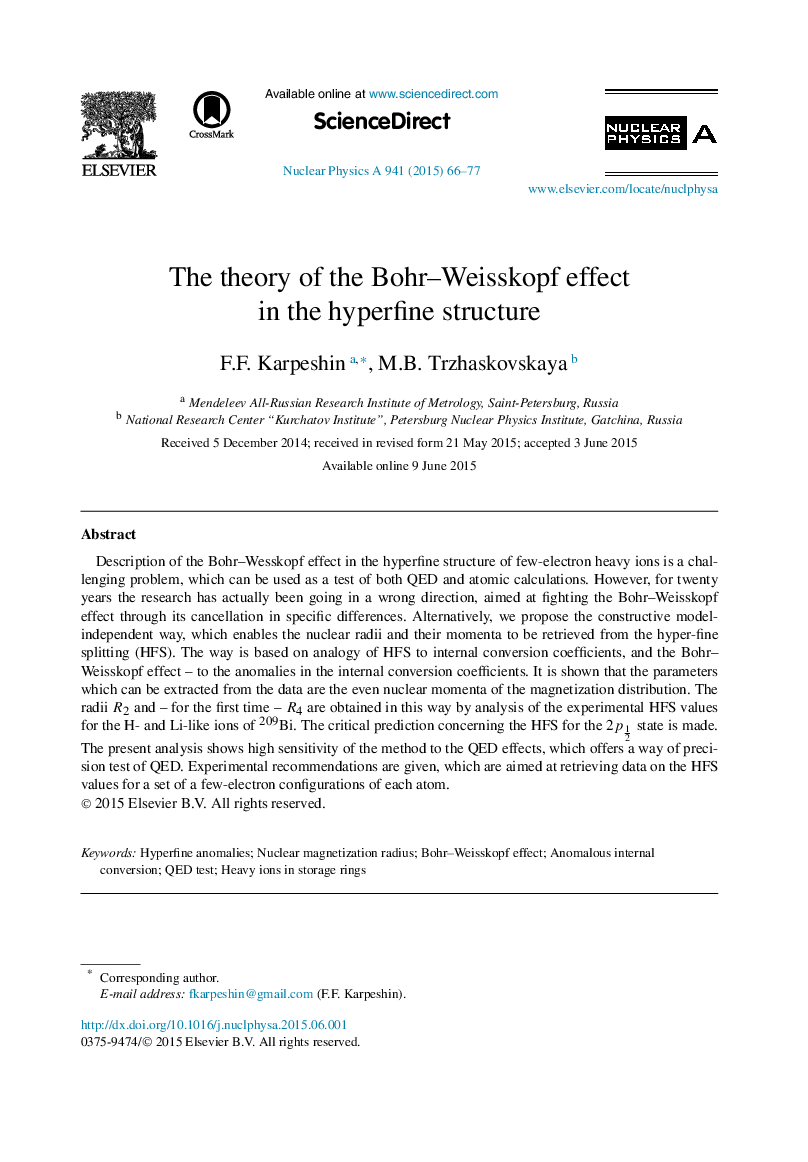| Article ID | Journal | Published Year | Pages | File Type |
|---|---|---|---|---|
| 1836846 | Nuclear Physics A | 2015 | 12 Pages |
Description of the Bohr–Wesskopf effect in the hyperfine structure of few-electron heavy ions is a challenging problem, which can be used as a test of both QED and atomic calculations. However, for twenty years the research has actually been going in a wrong direction, aimed at fighting the Bohr–Weisskopf effect through its cancellation in specific differences. Alternatively, we propose the constructive model-independent way, which enables the nuclear radii and their momenta to be retrieved from the hyper-fine splitting (HFS). The way is based on analogy of HFS to internal conversion coefficients, and the Bohr–Weisskopf effect – to the anomalies in the internal conversion coefficients. It is shown that the parameters which can be extracted from the data are the even nuclear momenta of the magnetization distribution. The radii R2R2 and – for the first time – R4R4 are obtained in this way by analysis of the experimental HFS values for the H- and Li-like ions of 209Bi. The critical prediction concerning the HFS for the 2p12 state is made. The present analysis shows high sensitivity of the method to the QED effects, which offers a way of precision test of QED. Experimental recommendations are given, which are aimed at retrieving data on the HFS values for a set of a few-electron configurations of each atom.
